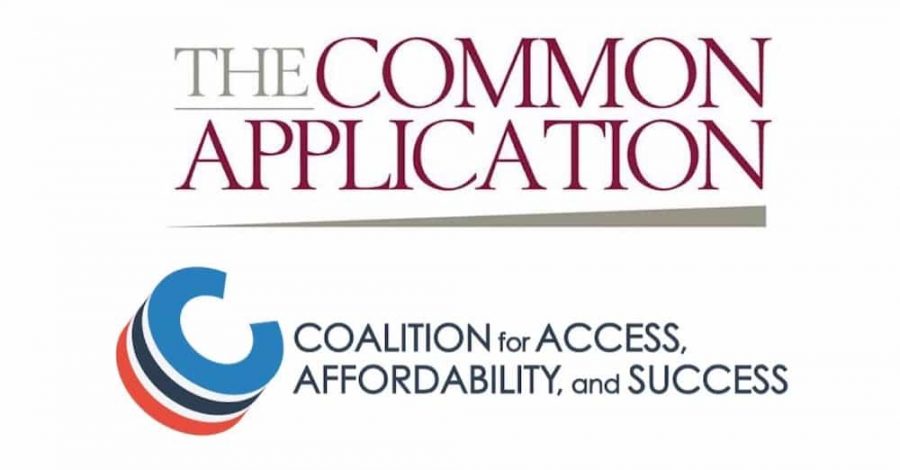Early Action deadline approaches
Students work on college applications for Early Action and Early Decision.
Many colleges and universities have their applications located on either the Common or Coalition Applications.
For many seniors, the Early Action deadline for college applications is closing in.
A number of students are feeling the stress as they scramble to polish their essays, submit SAT scores and ask teachers for recommendations. For most, the deadline to submit college applications for Early Action is Nov. 1.
Along with Early Action applications being due within the next couple of weeks, those applying under Early Decision will also generally have to meet the same Nov. 1 deadline.
Despite similar deadlines, the stark difference between these two application methods is that Early Decision plans are binding, meaning a student who is accepted as an Early Decision applicant must attend that school. Early Action gives applicants much more flexibility as plans are non binding and students would not have to commit to a college until May 1.
“Applying Early Actions provides an opportunity to show interest in a school without having to worry about it being binding,” senior Jasmine Phan said. “Early Action also allows for more scholarship opportunities.”
Many students view applying Early Action as providing more advantages and benefits when compared to applying under Regular Decision.
“One benefit is that you would know whether or not a college accepts you at an earlier time,” senior Michael Woldeab said. “This helps manage time better throughout the year.”
Early Action applicants usually receive notifications from schools by mid December. Regular Decision must submit applications by Jan. 1 and typically receive notification by late March.
“I’m applying early because I want to know my acceptance into a college as soon as possible so that I can prepare for it,” Woldeab said.
A number of colleges and universities are available on the Common Application however, with the relatively new Coalition Application and various schools having applications only available through their own websites, it has been a task for some students to figure out requirements for each school.
For example, on the Common Application applicants are required to complete tasks such as filling out a basic information section, completing an essay, submitting SAT or ACT score reports, adding teacher and counselors to the recommendation section, etc.
In addition, applicants are required to complete writing supplements and forms particular to specific schools on the application.
“I find the basic information section for application sites like the Common Application to be quite tedious,” Woldeab said. “They take a really long time to complete.”
Along with having to complete the Free Application for Federal Student Aid (FAFSA), most college applications require information about the financial background of an applicant’s family.
“Although it’s important, it gets a bit annoying to have to reenter all of the information about my parent and their finances,” Phan said.
For students like Woldeab and Phan, it has been an undertaking to keep track of all requirements for specific schools while also balancing the rigorous curriculum that comes with being a senior in the IB Diploma Programme.
“I’m applying to four or five schools under Early Action like UVA, Rice University, and Virginia Tech,” Woldeab said. “So working on that while still having to complete school work and participate in my extracurriculars has been challenging.”
Seniors have a few more weeks to get in those final essay edits and standardized test scores before they officially have to submit their applications for most schools under Early Action.

Senior Jude Nanaw is the current Co-Editor in Chief of The A-Blast. He has been on staff for four years where in previous years he has held the positions...












